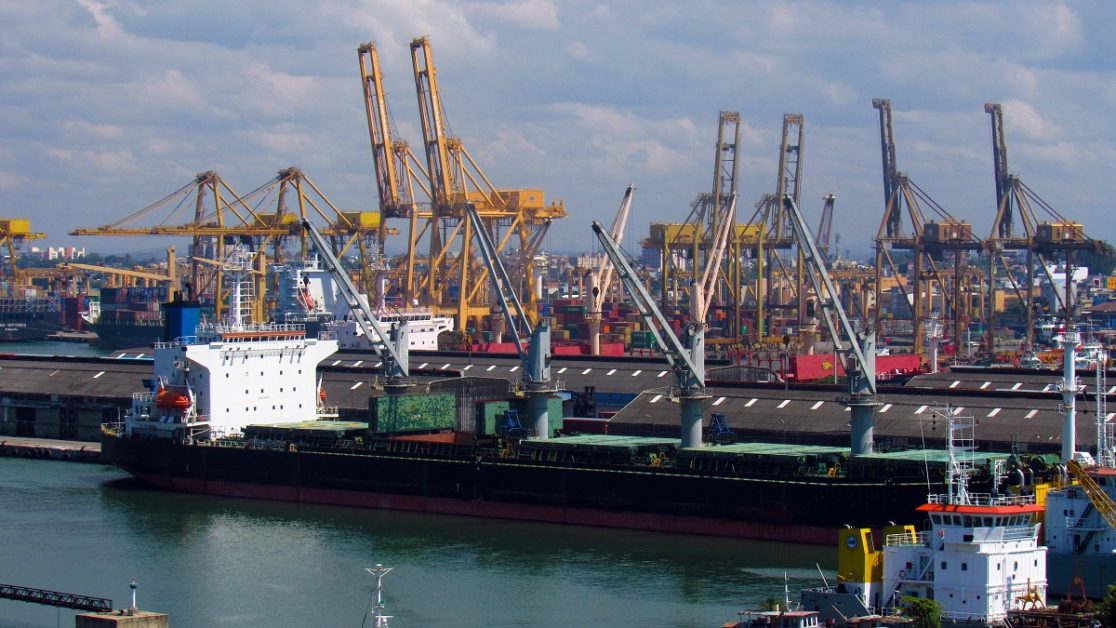Sri Lanka’s reputation is taking a hit after its year-old Government says it wants to pull the plug on two multimillion dollar infrastructure projects funded by Japan and guaranteed by its predecessor. If that happens, it would be the second time that a newly elected Sri Lankan Government has backed out of such agreements.
Sri Lanka has borrowed heavily to fund the development of infrastructure, such as ports.
The ultranationalist Government of President Gotabaya Rajapaksa wants to terminate the agreement with Japan, which had for decades been the largest supplier of development assistance to Sri Lanka, for the construction of an elevated commuter rail project through Colombo and the development of a container terminal in the Colombo Port.
A veteran Sri Lankan diplomat warned that the country will lose out if governments continue to abandon sovereign guarantees. “The last Government was ham-handed in the way it handled the Chinese projects and now we face a similar situation with Japan,” the diplomat told Nikkei Asia. “Japan’s development assistance to Sri Lanka made over the years has been without any strategic or political pressure.”
Government officials recently told local media that the first phase of the $ 1.8 billion Light Rail Transit (LRT) project, to be funded through a Japanese loan, “is not a priority for the Government”, echoing sentiments voiced since the middle of the year. Officials also said the Government sees no role for Japan in the Eastern Container Terminal (ECT) venture, which Tokyo was to fund with a $ 500 million loan.
The agreements for both landmark projects were signed by the coalition government that Rajapaksa convincingly defeated in the November 2019 elections. At the time, the ECT project was billed as a tripartite venture, involving Sri Lanka, India, and Japan, and aimed at easing congestion around the Colombo Port. The LRT was expected to offer a modern, alternative commute to a traffic-clogged route that has witnessed the highest vehicle growth in the country over the last 10 years.
Rajapaksa’s plans to spike both projects – which has taken Japanese officials by surprise – follows the path of his predecessor, former President Maithripala Sirisena. The latter’s governing alliance turned its ire on China to score short-term, domestic political gains after its electoral triumph in January 2015.
In the Sirisena Government’s crosshairs were two multibillion dollar infrastructure projects funded by China, which has replaced Japan in recent years as Sri Lanka’s largest development partner. Sirisena’s anti-China administration temporarily forced a halt to both projects, with costly consequences.
Sri Lanka’s moves at the time, which turned ties with China frosty, raised questions about the fate of the existing sovereign guarantees between the small Indian Ocean island and the Asian giant. The projects under China’s Belt and Road Initiative were the Port City, an artificial island off Colombo’s shores on which it had planned to build a modern financial district, and the new Hambantota Port along the country’s southern coast.
The Rajapaksa Government’s arbitrary actions toward Japan – justifying the move as a shift to end foreign loans for infrastructure projects and preferring investment-led public-private partnerships – has contributed to a national conversation about Sri Lanka’s dependency on debt for development.
Sri Lanka’s $ 88 billion economy is bogged down by a debt pile of $ 50.8 billion. The country is under pressure to settle an average of $ 4 billion annually in foreign debt over the next four years even as its foreign reserves have shrunk to a three-year low of $ 5.8 billion.
Recent research by Verité Research, a Colombo-based think tank, revealed that between 2005 and 2019, Sri Lanka secured 313 foreign loans worth $ 27.5 billion, most of it for infrastructure development.
China was the largest lender during that period, accounting for 33% of the loans, followed by the multilateral Asian Development Bank with 18%, and Japan 17%. But Japanese loans provided the most favourable terms, noted Verité.
The average loan bore an interest rate of 0.7%, with a grace period of 10 years, and maturity at 34 years. China’s loan terms, by contrast, bore an average interest rate of 3.3% and maturity in just 18 years.
The terms offered by the Japan International Co-operation Agency for the LRT were even more favourable: a $ 1.8 billion concessional loan at 0.1% interest with a 12-year grace period and maturity in 40 years.
“It’s a concessional loan on favourable international terms, so rejecting it raises questions about the intent of the rejection,” an Asian diplomat said.
The sentiment is shared by seasoned financial observers in Colombo, given the country’s dismal standing in the global economy after its sovereign ratings were reduced to junk this year by global ratings agencies.
“If you want to cancel the LRT you have to make a statement of intent, rather than doing it in an arbitrary manner and creating an international crisis,” said a senior financial industry insider. “The talk in the corridors of business is the Government is scuttling the LRT to give it to the Chinese.”
Opposition politicians warned against turning on a longtime supporter. “The real cost is not financial but diplomatic,” Opposition lawmaker Harsha de Silva told Nikkei. “The Government is certainly not strengthening the friendship with Japan who has been there for Sri Lanka over the years.”
Source: nation.lk







